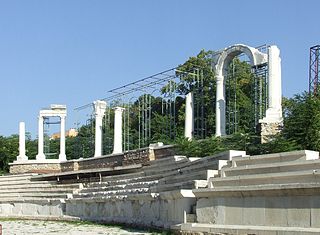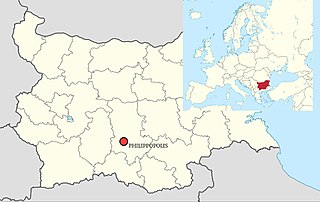 W
WThe Battle of Abritus, also known as the Battle of Forum Terebronii, occurred near Abritus in the Roman province of Moesia Inferior in the summer of 251. It was fought between the Romans and a federation of Gothic and Scythian tribesmen under the Gothic king Cniva. The Roman army of three legions was soundly defeated, and Roman emperors Decius and his son Herennius Etruscus were both killed in battle. They became the first Roman emperors to be killed by a foreign enemy. It was one of the worst defeats suffered by the Roman Empire against Germanics, rated by the Roman historian Ammianus Marcellinus as on par with the Battle of the Teutoburg Forest in 9 AD, the Marcomannic invasion of Roman Italy in 170, and the Battle of Adrianople in 378.
 W
WThe Battle of Adrianople, sometimes known as the Battle of Hadrianopolis, was fought between an Eastern Roman army led by the Eastern Roman Emperor Valens and Gothic rebels led by Fritigern. The battle took place in the vicinity of Adrianople, in the Roman province of Thracia. It ended with an overwhelming victory for the Goths and the death of Emperor Valens.
 W
WThe Battle of Beroe was a conflict near Stara Zagora, ancient Ulpia Augusta Traiana, between the Romans and Goths in 250 which resulted in a Gothic victory.
 W
WThe Battle of the Catalaunian Plains, also called the Battle of the Campus Mauriacus, Battle of Châlons, Battle of Troyes or the Battle of Maurica, took place on June 20, 451 AD, between a coalition - led by the Roman general Flavius Aetius and by the Visigothic king Theodoric I - against the Huns and their vassals - commanded by their king Attila. It proved one of the last major military operations of the Western Roman Empire, although Germanic foederati composed the majority of the coalition army. Whether the battle was strategically conclusive remains disputed: the Romans possibly stopped the Huns' attempt to establish vassals in Roman Gaul. However, the Huns successfully looted and pillaged much of Gaul and crippled the military capacity of the Romans and Visigoths. Attila died only two years later in 453, and after the Battle of Nedao (454) a coalition of the Huns' Germanic vassals dismantled his Hunnic Empire.
 W
WThe Battle of Faesulae was fought in 406 AD as part of the Gothic invasion of the Western Roman Empire. After General Flavius Stilicho repelled the Visigoths at Pollentia and Verona, he encountered a new incursion of Vandals and Goths led by Radagaisus whose forces attacked Florence. Stilicho ultimately defeated the invaders at Faesulae with support from Uldin the Hun and Sarus the Goth. Radagaisus was executed after the battle and survivors of his armies fled to Alaric.
 W
WThe Battle of the Frigidus, also called the Battle of the Frigid River, was fought between 5 and 6 September 394 between the army of the Roman emperor Theodosius the Great and the army of the rebel augustus Eugenius, in the eastern border of Regio X in Roman Italia. Theodosius won the battle and defeated the usurpation of Eugenius and Arbogast, restoring unity to the Roman Empire. The battlefield, in the Claustra Alpium Iuliarum near the Julian Alps through which Theodosius's army had passed, was probably in the Vipava Valley – with the Frigidus River being the modern Vipava – or possibly in the valley of the Isonzo.
 W
WThe Siege of Philippopolis was fought in about 250 between Rome and the Goths during the invasions of 249–253 at the Thracian city of Philippopolis, modern Plovdiv, Bulgaria. It was part of the long-running series of Gothic Wars.
 W
WThe Battle of Thessalonica was fought in the summer or autumn of 380 by Fritigern's Goths and a Roman army led by Theodosius I. Reconstituted after Adrianople, the East Roman army suffered another major defeat. Theodosius retreated to Thessalonica and surrendered control of operations to the Western Emperor, Gratian.